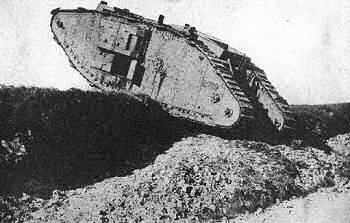|
|
The Channel Islands and the Great War
|
|
The Jersey
Contingent
A Brief History
|
|
The War in Belgium
It was a much diminished Jersey Company that left the
Somme and crossed the border into Belgium a few weeks
later. 16th (Irish) Division was sent north to recuperate
and refit in the sector of trenches in front of Messines
Ridge, a strongly fortified German position lying to the
south of the famous town of Ypres. The following winter
and spring was spent there, reorganising and slowly regaining
fighting strength.
For the Jersey Company it was a watershed time. With
no volunteers forthcoming from Jersey since 1915, it was
forced to accept men from the UK and Ireland in order
to make up numbers. From this point on the separate identity
of the unit was progressively worn down - and there was
a great deal of bitterness amongst the original members
as a result.
In June 1917 the British attacked Messines Ridge. Preceded
by the exploding of 19 massive mines under the German
defences, 10 Divisions, including the 16th (Irish), succeeded
in capturing the entire ridge in one of the most celebrated
victories of the war. The unexpected swiftness of the
victory meant that many of the reserve units, including
7th Royal Irish Rifles, were not committed directly to
the fighting that day.
In August, however, they were not so fortunate. By that
time the battle had moved north to the front around Ypres
itself, and after a successful opening assault in July,
had bogged down in difficult conditions exacerbated by
strong German defences and swamp-like conditions brought
on by heavy rain. On 16th August, 16th (Irish) Division
was ordered to launch a fresh attack towards the village
of Zonnebeke. This time, 7th Royal Irish Rifles were to
be in the first wave. But, having already endured a week
in dreadful positions around the hamlet of Frenzenberg,
the Battalion was in no real shape to make an attack against
strong German defences. Soon after leaving their trenches
the men were halted by heavy shelling and remorseless
machine gun fire.
The Jersey Company was in the centre of the attacking
force and came up against resolutely defended concrete
bunkers. Despite several attempts to move forward, in
the end they were forced because of heavy casualties to
fall back to their starting positions. It was another
red-letter day for the Contingent: by the end of it a
further 9 men were dead, and scores more wounded.
|

A British Tank advancing
|
The End With the Royal Irish Rifles
In September, 7th Royal Irish Rifles moved
to serve in trenches near the French town of Bapaume,
north of the old Somme Battlefield and facing the notorious
German "Hindenburg Line". Whilst there, news
came through that the battalion was to be disbanded,
and its men sent to others in order to bring them up
to strength. It was a decision faced by many Irish battalions
at this time, and was caused by a lack of recruits in
Ireland. It was also a decision that caused considerable
dismay amongst the remaining members of the Contingent,
and they protested to the Jersey authorities as a result.
If the battalion to whom they had been originally attached
was being disbanded, they argued, surely they should
be allowed to return home, or at least move as a complete
unit to another regiment of their choice? Before consideration
could be given however, the majority of remaining Contingent
men transferred, along with 400 others from 7th Royal
Irish Rifles, to the Regiment's 2nd Battalion.
|
|
In November they found themselves taking part in the
Battle of Cambrai. This was another of the war's landmark
battles: the first for which the British massed together
hundreds of tanks for a surprise attack on the German
line. On November 20th they burst through the Hindenburg
Line with surprising ease, and pushed on towards the town
of Cambrai. For a fleeting moment a major breakthrough
appeared to be on the cards; but just outside the town
the advance was held as the Germans responded with customary
alacrity, and stubbornly defended a number of key positions.
One was the village of Moeuvres; and it was here on the
morning of the 23rd November that 2nd Royal Irish Rifles,
and their new Jersey comrades, were committed to battle.
They attacked the heavily fortified village, and came
very close to capturing it as planned. But having pushed
into the centre, they found themselves increasingly isolated,
and were forced to retreat as evening fell. Left behind
were 17 dead, including three from the Contingent. A fourth
member would die of his wounds the next day.
In December, as a result of the appeal made earlier,
news came through that those surviving Contingent members,
who wanted to, could leave the Royal Irish Rifles, and
transfer to the Hampshire Regiment, a unit with long standing
Jersey connections, and with whom considerable numbers
of Islanders were already serving.
|
 Page 2
Page 2 |
Page 4  |
|
|